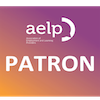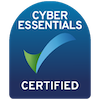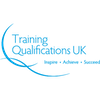CPD Principles of Safeguarding
Course Overview
Safeguarding is the process of keeping vulnerable adults and children safe to protect them from abuse and neglect and provide effective care. Relevant for most sectors, safeguarding is especially vital for people working in health and social care or early years, childcare and education.
Our online CPD Principles of Safeguarding training course will provide skills, knowledge and understanding in a range of areas and covers how to protect both children and adults at risk. The course content covers subjects such as safeguarding in organisations, legislations, local initiatives, safeguarding children and young people, and how to recognise signs of abuse, and much more.
Aimed at both individuals looking for an online safeguarding course for personal or professional reasons, or employers looking for safeguarding training for staff, this course has got you covered.
Key Information
Course Length
26 hours
Course Level
Level CPD
Learning Method(s)
Online materials
Online assessment
For Individuals
Benefits
- Automatic enrolment with an immediate start
- Fully online course
- Study from anywhere, at any time
- Perfect for an introduction or refresher in a subject
- A great addition to a CV
- Receive a digital e-certificate upon completion
- Nationally recognised
- Access to an award-winning e-learning platform
- No hidden costs
Cost and Funding Information
Course Price
£30.00
Study this course
Buy the course today and begin your journey to qualification
Section 1: The national and local context of safeguarding and protection from abuse
Learn what safeguarding means and how it applies to adults and children, the six principles of safeguarding, the importance of safeguarding for individuals and organisations, current legislation, national policies and local initiatives, and the roles of different agencies.
Section 2: The responsibilities of adults to safeguard children and young people
Explore duty of care, ways in which adults can safeguard children and young people, and how to ensure consistent safeguarding.
Section 3: How to recognise potential and actual abuse and harm
Discover the different forms and types of abuse, signs and symptoms, why individuals may not disclose abuse, and factors that may contribute to an individual being more vulnerable.
Section 4: How to respond is abuse is disclosed, suspected or alleged
Learn the actions to take in the event of suspicions or allegations that an individual is experiencing abuse, including who to report suspicions of abuse to, the procedures to follow if abuse, exploitation or harm is suspected, who to report concerns to, how to respond to a disclosure of abuse, and what not to do if a disclosure takes place.
 For Businesses
For Businesses
With our combination of market-leading learning resources, exceptional customer service and award-winning LMS solutions, we are confident we can assist with your education and training delivery needs.
Enquire nowNeed some more information?
Check out our Frequently asked question via the link below
















